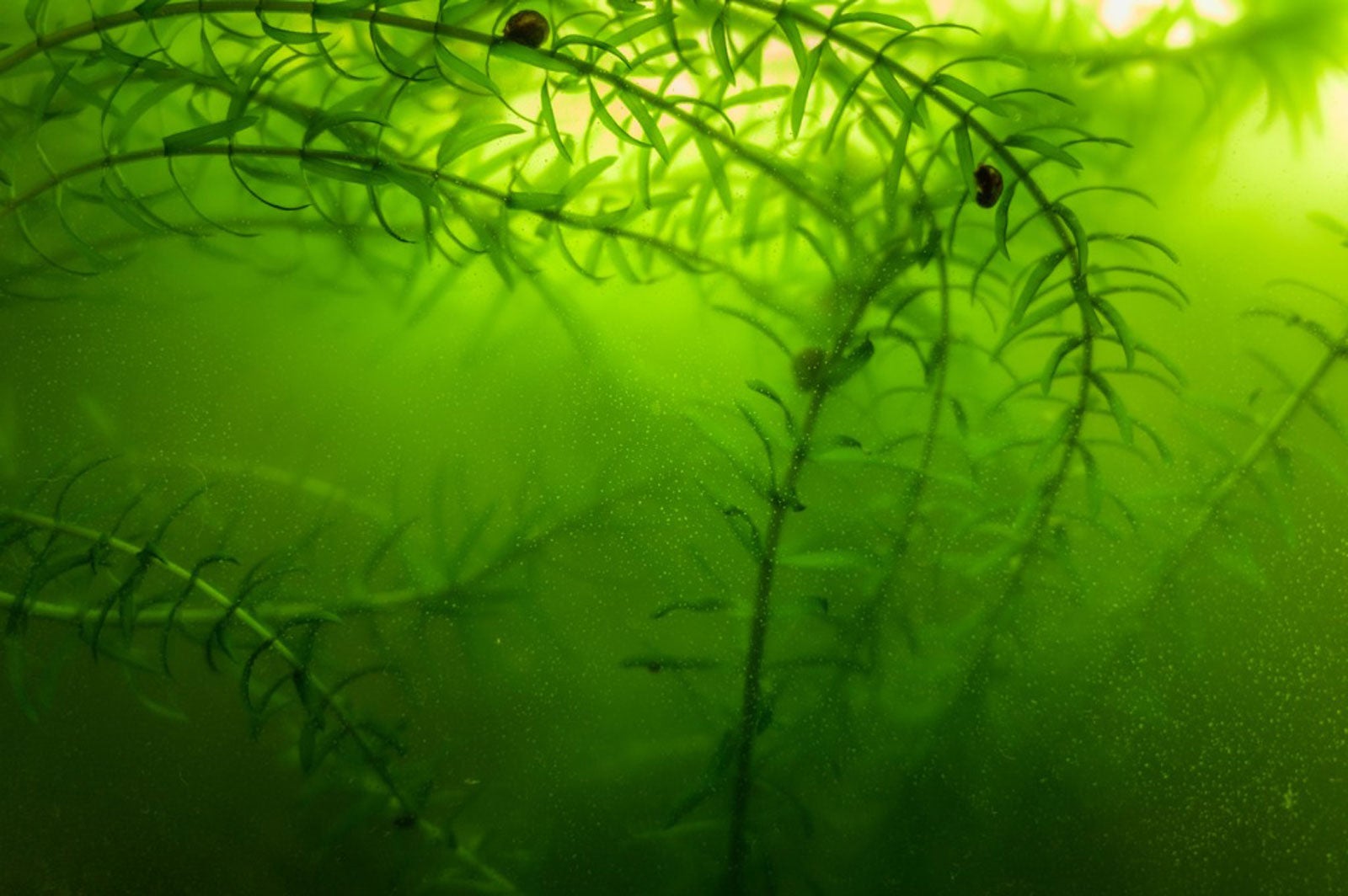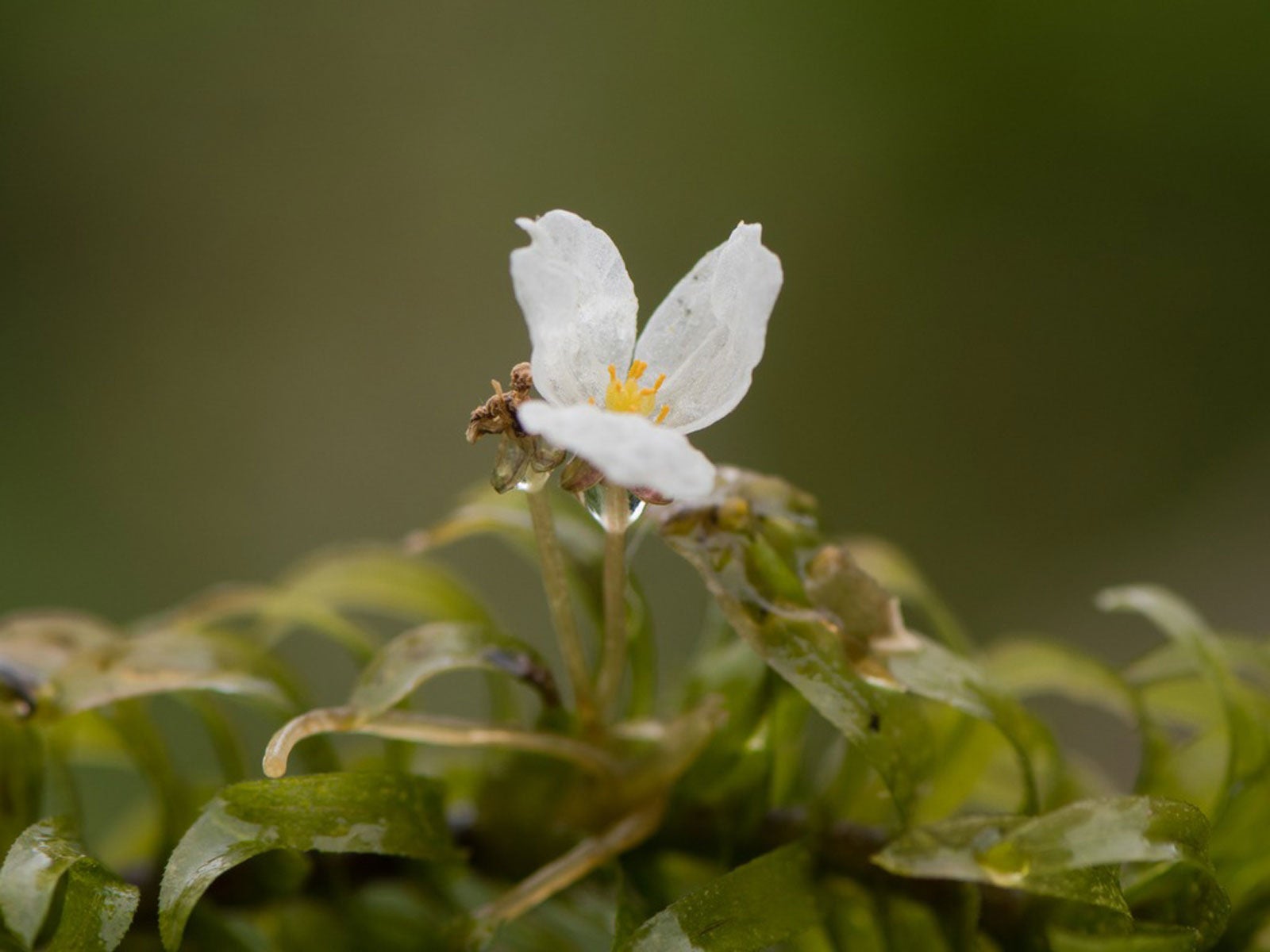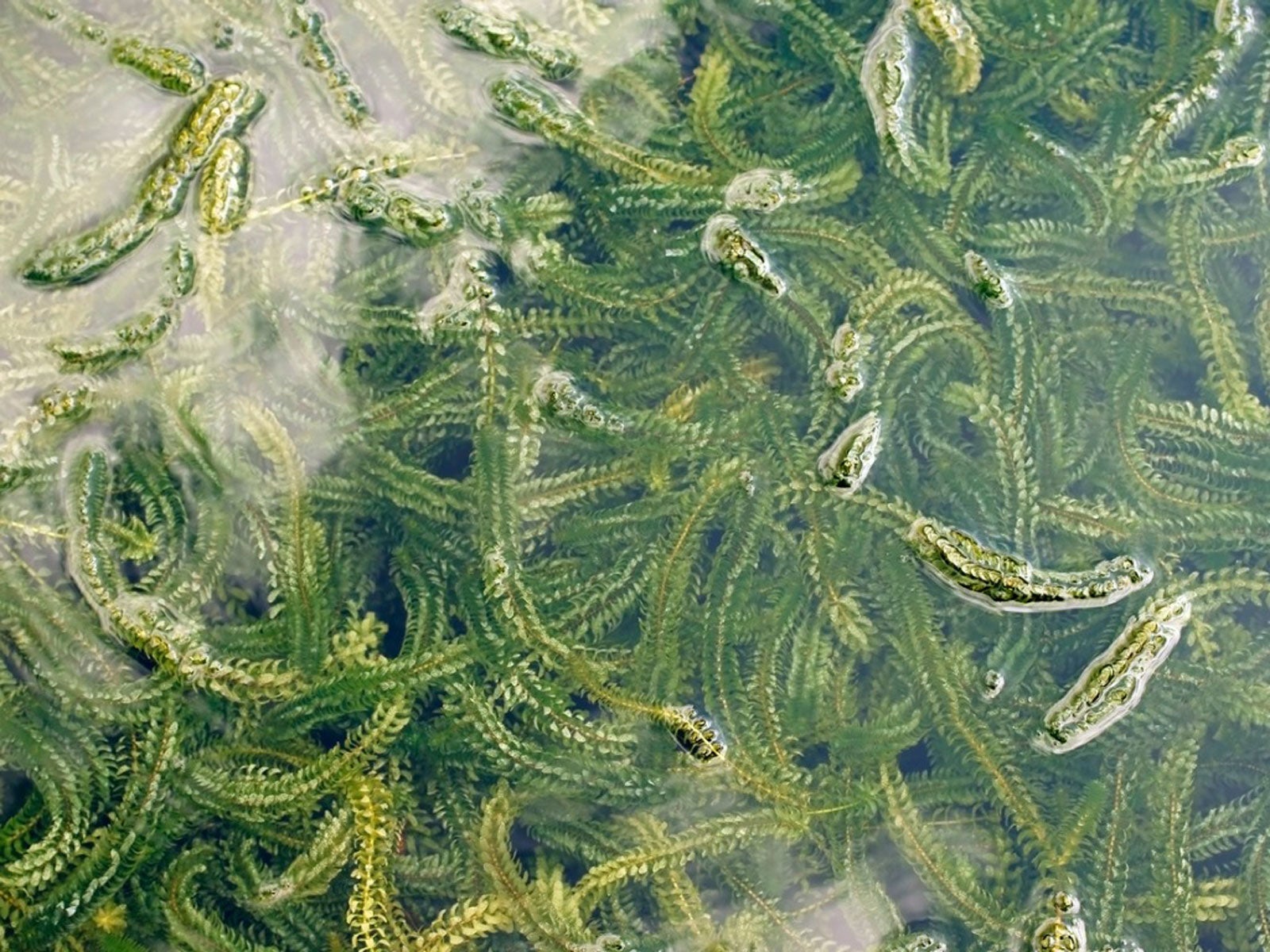Types Of Elodea: Information About Elodea Plants

If you’re a boating enthusiast or an aquarist, then you’re probably familiar with different elodea plants. There are actually five to six types of elodea. Not all elodea varieties are native to the U.S. Some, like Brazilian elodea (Elodea densa), were introduced and others, such as Canadian waterweed (E. canadensis), have naturalized in other regions of the world. Some varieties of elodea have long been popular fish tank additions or teaching tools.
About Elodea Plants
Elodea is an aquatic plant that is found in ponds and waterways. All varieties of elodea are herbaceous perennials with a spiral pattern of dark green leaves along the stem. All are dioecious, bearing only male or female blooms. Plants reproduce by asexual fragmentation and do so rapidly.
Elodea does have thin, wiry roots that attach to the soil at the bottom of the waterway, but they also grow well floating. Due to their ability to reproduce so quickly, some types of elodea are classified as invasive.
Different Elodea Plants
Some elodea varieties are harmless while others are considered invasive. Many invasive populations have originated from a single, introduced fragment.
Canadian waterweed, for example, is an elodea plant that is native to North America and is considered to be a “safe” variety. Hydrilla or Florida elodea (Hydrilla verticillata) is deemed restricted, growing rapidly and crowding out other aquatic plant species.
Florida elodea has long branching stems with small, serrated leaves. Like other elodea varieties, leaves are set in a whirling pattern along the stem of the plant. Leaf midveins are usually red. It feels coarse to the touch and produces small, white blooms in sets of threes.
This elodea floats on the surface of the water in dense mats and can survive in both flowing and brackish water. It is sometimes confused with American elodea (Elodea canadensis), but the American variety lacks leaf serration on lower leaf midribs and the patterning is in groups of three.
Gardening tips, videos, info and more delivered right to your inbox!
Sign up for the Gardening Know How newsletter today and receive a free copy of our e-book "How to Grow Delicious Tomatoes".
Brazilian elodea is a different elodea plant that, like Florida elodea, has a reputation for clogging up waterways and stifling diverse aquatic plant life. It sprouts from double nodes located along the stems and is spread by boaters who unknowingly carry it from infested waterways to un-infested. Like Florida elodea, the Brazilian variety grows rapidly into mats that choke out native plants and create a hazard for swimmers, boaters, and fishermen.
Types of Elodea Control
Aquatic herbicides are sometimes used to alleviate the progression of different elodea plants, but their use is fairly ineffective. Manual control just breaks elodea into sections that reproduce again. Stocking sterile grass carp is the most effective control method; however, it cannot be used in waterways with salmon or steelhead fish runs.
The most commonly used method of control runs a bit along the honor method and asks that boaters and pleasure craft users inspect their vehicles and remove any elodea before moving on.

Amy Grant has been gardening for 30 years and writing for 15. A professional chef and caterer, Amy's area of expertise is culinary gardening.
-
 Types Of Tomatoes Explained: Explore The Many Wonderful Shapes, Colors, Flavors, & Best Uses
Types Of Tomatoes Explained: Explore The Many Wonderful Shapes, Colors, Flavors, & Best UsesThe world of tomato varieties is vast and fascinating. Learn about the key types to grow in your garden, tailored to your preferences and space.
By Amy Grant
-
 Try The Trend – Turn Any Bed Into A Keyhole Garden With This Clever In-Ground Composter
Try The Trend – Turn Any Bed Into A Keyhole Garden With This Clever In-Ground ComposterKeyhole gardening is an efficient and sustainable practice that saves space. Get started on this DIY project quickly and easily with an in-ground composter.
By Bonnie L. Grant
-
 What Is Brazilian Waterweed – Learn How To Grow Anacharis In Aquariums
What Is Brazilian Waterweed – Learn How To Grow Anacharis In AquariumsThe use of Brazilian waterweed in aquariums is one example of how a single planting can overtake its aquatic home. Learn more here.
By Tonya Barnett
-
 Elodea Pondweed Info – How To Manage Elodea Plants
Elodea Pondweed Info – How To Manage Elodea PlantsElodea waterweed is also known as Canadian pondweed. It is popular for water gardens and cool water aquariums as a submerged aquatic plant and can help control algae. However, it can also become invasive. Click here for more info and tips on managing elodea.
By Teo Spengler